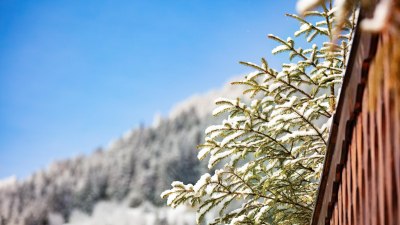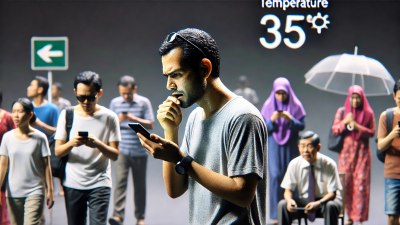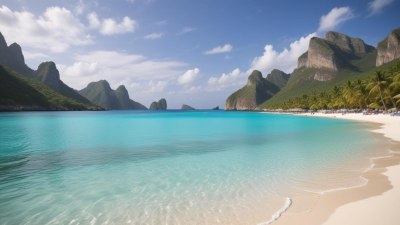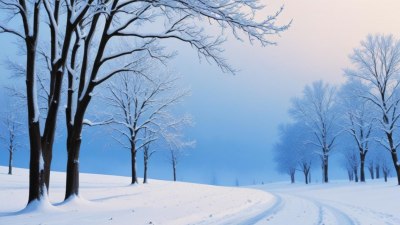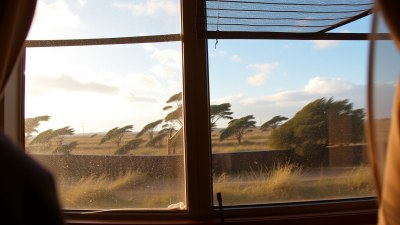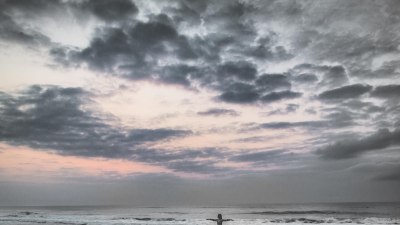Why Some Places Get More Fog Than Others
Explore the scientific reasons behind varying fog patterns and why some regions experience more fog than others worldwide.
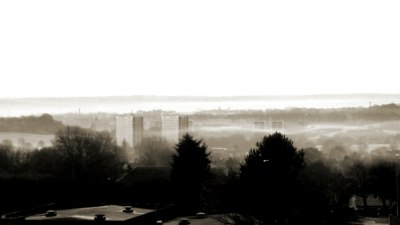
Fog is a fascinating meteorological phenomenon that has intrigued people for centuries. It is essentially a cloud that forms near the ground, reducing visibility and enveloping landscapes in a misty veil. However, not all places experience fog with the same frequency or intensity. Some regions seem to be perpetually shrouded in fog, while others rarely see it. Understanding why some places get more fog than others involves an examination of various climatic, geographical, and environmental factors.
To begin, it is essential to understand what causes fog. Fog forms when the air near the ground cools to its dew point, the temperature at which air becomes saturated with moisture, leading water vapor to condense into tiny droplets suspended in the air. This process requires certain conditions: moisture, a source of cooling, and calm or light wind conditions. When these ingredients come together, fog forms.
Types of Fog and Their Formation
Fog manifests in different types, each with distinct formation mechanisms and environmental prerequisites. The major types include radiation fog, advection fog, upslope fog, evaporation fog, and valley fog.
Radiation fog forms on clear nights with calm winds, when the ground loses heat through radiation, cooling the air above it to the dew point. This type is common in valleys and low-lying areas where cold air can settle and moisture is available.
Advection fog occurs when warm, moist air moves horizontally over a cooler surface, such as cold ocean currents or snow-covered land, causing the air to cool to its dew point. Coastal regions often experience advection fog, particularly when warm air flows over cold ocean waters.
Upslope fog is created when moist air ascends a slope or mountain, cooling adiabatically to the dew point as it rises. Regions with significant uplift from mountain ranges frequently see this type of fog.
Evaporation fog arises when cold air passes over warm water, causing water vapor to evaporate and saturate the air. This fog often forms over lakes or rivers during cooler months.
Valley fog develops in low-lying areas surrounded by higher terrain, where cold air pools and moisture condenses, especially after rainy periods or heavy dew formation.
Geographical Influences on Fog Formation
Geography plays a crucial role in determining if an area will frequently experience fog. Coastal regions, mountainous areas, and valleys are natural hotspots for fog due to their unique interactions with air and moisture.
Coastal Locations: Coasts often see frequent fog because of the interaction between land and ocean. Cold ocean currents cool the moist air above them, making coastal fog common. For example, the California coast is famous for its persistent marine layer fog, especially during summer months when warm air moves over the cold Pacific Ocean. This fog forms as moist air cools and condenses above the chilly water, creating a thick blanket of fog that drifts inland.
Mountainous Areas: Mountains influence air movement and temperature. Upslope fog is prevalent in mountain environments, where moist air is forced to rise and cool. Regions like the Appalachian Mountains in the eastern United States or the Scottish Highlands regularly experience fog due to these orographic effects.
Valleys: Topography causes valleys to trap cold air and moisture, leading to fog formation. In these enclosed basins, nighttime cooling and moisture accumulation increase fog likelihood. The Central Valley of California frequently sees dense fog during fall and winter, often referred to as "tule fog." This persistent fog reduces visibility over large areas and can last for days.
Climate and Seasonal Factors Affecting Fog
Climate governs the background conditions that promote or hinder fog formation. Several climatic factors influence fog frequency:
Humidity: High humidity levels are essential for fog since saturation of air moisture is required for droplet formation. Regions with consistently moist air, such as coastal or rainforest areas, tend to have higher fog prevalence.
Temperature Patterns: Nighttime cooling is vital for fog, particularly radiation fog. Areas with clear skies and calm winds at night cool more efficiently, raising fog chances. Conversely, strong winds can mix the atmosphere and prevent fog from settling.
Seasonal Changes: Fog formation often peaks in particular seasons. In many temperate zones, fall and winter favor fog due to longer nights and more stable atmospheres conducive to cooling near the surface. For instance, London's infamous fogs happened predominantly in the colder months before air pollution reductions.
Weather Systems: High-pressure systems with calm, clear conditions often promote fog formation. In contrast, stormy or windy weather tends to disperse fog.
Case Studies of Foggy Regions
Several areas worldwide are notorious for their dense, frequent fog, owing to their unique combinations of moisture, temperature, and geography.
San Francisco, USA: This city experiences persistent fog largely due to the Pacific Ocean's cold current. Warm inland air moves over the cold ocean water, cooling and condensing to form fog that moves through the Golden Gate, blanketing the city.
Duluth, Minnesota, USA: The city lies near Lake Superior, where evaporation fog forms when cold air passes over the warmer lake water, especially in fall.
London, England: Historical fogs in London were a blend of natural fog and pollution, known as "pea-soupers." The city's climate and river proximity facilitate fog, especially under high-pressure, calm conditions, although pollution control has vastly improved visibility today.
Mountains of Scotland: The Highlands' uplifts trigger frequent upslope fog as moist Atlantic air climbs the terrain.
Central Valley, California: Known for the tule fog, this region's topography and climate combine to create vast fog events in cooler months.
Human Activities and Fog Influences
Human activity also influences fog frequency and intensity. Urban areas can modify local climates, creating urban heat islands that alter cooling rates. Pollution can contribute particles that help in droplet formation, sometimes exacerbating fog conditions, though clean air tends to result in natural fog behaviors.
Land use changes, such as deforestation or irrigation, can affect local humidity and temperature patterns, impacting fog formation. For example, large-scale irrigation in arid zones may increase local moisture, potentially raising fog occurrence.
Conversely, air pollution controls that reduce particulate matter can diminish fog formation since aerosols often act as nuclei for condensation.
Technological and Safety Considerations
Understanding where fog is more likely aids transportation safety. Airports in fog-prone regions invest in sophisticated instrument landing systems due to low visibility. Marine and road transport also rely on forecasts influenced by knowledge of typical fog patterns.
Technological advances, including satellite imagery and weather radar, allow better prediction and management of fog impacts.
The reasons why some places get more fog than others boil down to the interplay of moisture availability, temperature conditions that promote cooling to the dew point, local topography, and broader climatic influences. Coastal cold currents, mountainous terrain, valley formation, humidity levels, and seasonal weather patterns all act together to create environments that are more conducive to fog.
While fog may be common in some areas and rare in others, the basic physical processes remain the same. This understanding helps meteorologists predict fog and informs residents and travelers about potential visibility challenges.
By appreciating the complexities of fog formation and the diversity of fog types, we gain insight into the dynamic interactions of earth's atmosphere, water, and land, illustrating how particular places develop their distinctive weather and climate phenomena.

